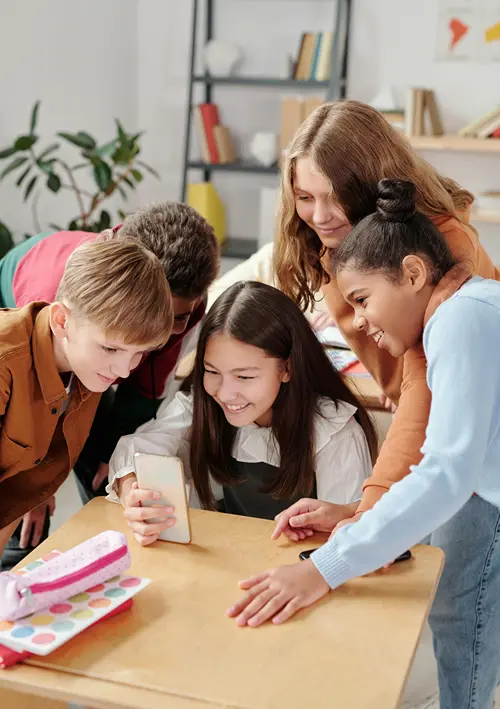How Different Cultures Celebrate Festive Holiday Traditions Around the World
“Why does the air just feel different when the calendar hits December? The days might be shorter (unless you’re enjoying a summer Christmas in Australia), but the world seems to get a whole lot brighter The Holiday Season is more than Santa Claus; it is actually a massive, worldwide tapestry of celebrations.
From lighting lamps in India to sweeping away bad luck in China, families everywhere are celebrating themes of light, hope, and new beginnings.
A Global Tour of Festive Celebrations
Ready to expand your horizons? Let’s take a global tour of how the world celebrates this festive season, stretching all the way from December into the New Year!
Las Posadas (The Inns)
- When: December 16th – December 24th
- Who: Mexico, Latin America, and Hispanic communities in the US
In Mexico and parts of Central America, the countdown to Christmas is an event all on its own! Las Posadas (which means “The Inns”) is a nine-night celebration that reenacts Mary and Joseph’s search for shelter before Jesus was born.
During the procession, a group travels to different houses singing songs to ask for lodging. At the final house, they are welcomed inside for a party with warm punch (ponche), food, and, most importantly for the kids, star-shaped piñatas filled with candy and fruit. It’s a wonderful tradition that emphasizes hospitality and community.
Hanukkah (The Festival of Lights)
- When: Varies annually (Mid-to-Late December)
- Who: Jewish Communities
Hanukkah is an eight-night celebration that honors a miracle from long ago. The story goes that a small band of Jewish fighters reclaimed their Holy Temple, but they only had enough oil to light the temple’s lamp for one night. Miraculously, the oil lasted for eight full nights!
Today, families celebrate by lighting the menorah (adding one candle each night), eating foods fried in oil (like latkes or jelly donuts), and spinning a four-sided top called a dreidel.
Bodhi Day (Day of Enlightenment)
- When: December 8th
- Who: Buddhists
While many December holidays are about “hustle and bustle,” Bodhi Day offers a moment of calm. This day commemorates the moment Siddhartha Gautama (the Buddha) attained enlightenment while sitting under a Bodhi tree.
Instead of a big feast, this day is often celebrated with meditation, chanting, and acts of kindness. Some families decorate a small Ficus tree with colored lights, representing the different paths to enlightenment. It is a beautiful reminder to find peace amidst the holiday rush.
Winter Solstice (Yule)
- When: Around December 21st
- Who: Various cultures, Nature lovers, and Pagan traditions
For students of science, this is the shortest day and the longest night of the year in the Northern Hemisphere. But culturally, it is a celebration of the sun’s return!
Many ancient traditions, like bringing evergreen boughs inside or lighting a Yule log, started as ways to remind people that life continues even in the depth of winter. It is a celebration of nature’s cycles and the promise that brighter days are ahead.
Christmas (December 25th)
- When: December 25th (Christmas Day(
- Who: Christians and western celebrators worldwide
You probably know about the Christmas tree and Santa Claus, but did you know traditions change depending on where you land on the map?
In the United States, children leave cookies for Santa. In France, they might leave shoes by the fireplace for Père Noël. In Australia, where it is summer, Christmas dinner might be a BBQ on the beach! At its heart, however, it commemorates the birth of Jesus and is a time for giving and gathering with family.
On December 26th, Boxing Day is British tradition celebrated the day after Christmas in the UK, Canada, Australia, New Zealand, and South Africa.
Kwanzaa (A Celebration of Family & Culture)
- When: December 26th – January 1st
- Who: African-American and Pan-African communities
Kwanzaa is a vibrant, week-long celebration honoring African heritage and culture. It is not a religious holiday, but a cultural one. Each of the seven nights focuses on a specific principle (the Nguzo Saba), such as Unity (Umoja) or Creativity (Kuumba).
Families light a candle holder called a kinara, share gifts (often homemade or educational), and come together for a large feast called the Karamu on December 31st.
Orthodox Christmas
- When: January 7th
- Who: Orthodox Christians (Eastern Europe, Egypt, Ethiopia, and more)
Wait, Christmas in January? Yes! Many Orthodox Christians (including those from Ukraine, Russia, and Serbia) follow the older Julian calendar for religious holidays, which currently runs 13 days behind the Gregorian calendar we use every day.
For many Ukrainian families, the celebration begins on Christmas Eve (Jan 6th) with a Holy Supper featuring 12 meatless dishes to represent the 12 apostles. One key tradition is Kutia, a sweet grain pudding. It’s a wonderful example of how the holiday spirit extends well into the New Year.
Russia celebrates Christmas, primarily on January 7th due to the Russian Orthodox Church following the older Julian calendar This makes it a significant religious holiday with traditions like feasts, church services, and caroling. It often fallows the longer New Year’s holiday period when many secular customs blend with religious ones, especially after the Soviet era.
Isra and Mi’raj (The Night Journey)
- When: Varies (Around January 16th in 2026)
- Who: Muslims
While the major festivals of Eid move through the seasons (sometimes in summer, sometimes in spring), this year, the holy observance of Isra and Mi’raj falls in January. This night commemorates the Prophet Muhammad’s miraculous night journey from Mecca to Jerusalem and his ascension to the heavens.
It isn’t a “party” in the same way New Year’s Eve is. Instead, it is a “Holy Night.” Families often spend the night in prayer, reading the Qur’an, and telling the story of the journey to children. In some cultures, cities are lit up with candles and lights to mark the occasion.
Lunar New Year (The Spring Festival)
- When: Late January or Early February
- Who: Many Asian cultures (China, Vietnam, Korea, and more)
Just when you think the festivities are over, the Lunar New Year arrives to finish the season with a bang! This is the most important holiday in China and many other Asian countries. While often called the Spring Festival, it goes by different names depending on where you are. For example, it is celebrated as Tết in Vietnam and Seollal in Korea.
Traditions include cleaning the house to “sweep away” bad luck from the old year, hanging red decorations for prosperity, and handing out red envelopes containing money to children. Whether it is called Tết, Seollal, or the Spring Festival, it is a time deeply centered on family reunions, honoring ancestors, and welcoming good fortune for the year ahead.
Diwali (The Festival of Lights)
- When: Varies (Usually October or November)
- Who: Hindus, Jains, Sikhs, and some Buddhists
Although it often falls a little earlier than year end or new year holidays, Diwali is one of the world’s biggest and brightest celebrations. It gets its name from the row (avali) of clay lamps (deepa) that families light outside their homes.
The festival symbolizes the spiritual victory of light over darkness, good over evil, and knowledge over ignorance. To celebrate, families decorate their floors with colorful art patterns called rangoli, share sweets, wear new clothes, and light up the night sky with fireworks. It’s a dazzling display of joy that sets the tone for the season.
Celebrating Together
Whether you are lighting a menorah, decorating a tree, or waiting for the moon to rise, the message of this season is universal. We all look for light in the darkness, we all cherish our families, and we all hope for a happy, healthy year ahead.
Activity for Families: This year, why not pick one tradition from this list that is new to you? Read a book about it, try a recipe, or simply talk about it at the dinner table. It’s the perfect way to bring a little more of the world into your home.

Notable Festive Celebrations and Dates
St. Nicholas Day (December 6): Celebrated in parts of Europe, honoring kindness and generosity through small gifts and acts of charity.
Saint Lucia Day (St. Lucy’s Day – December 13): One of the most celebrated festivities in Sweden, also observed in Norway, Denmark, and parts of Finland.
Omisoka (December 31): Japan’s year-end tradition focused on reflection, family, and preparing for a fresh start in the New Year.
Hogmanay (December 31): Scotland’s New Year celebration, known for music, fireworks, and traditions meant to bring good luck.
Three Kings Day (Epiphany) (January 6): Celebrated in Spain, Latin America, and other regions, marking the arrival of the Wise Men with parades, gifts, and special foods.
Timkat (January 19): An important Ethiopian Orthodox celebration commemorating the baptism of Jesus, featuring colorful processions and communal gatherings.
Pongal (Mid-January): A South Indian harvest festival giving thanks for the sun, the land, and abundance, often celebrated over several days.
Lohri / Maghi (Mid-January): Winter festivals celebrated in Punjab, marking the end of winter and the harvest season with bonfires and songs.
Last Updated on December 18, 2025 by SafeSearchKids Editorial Team










